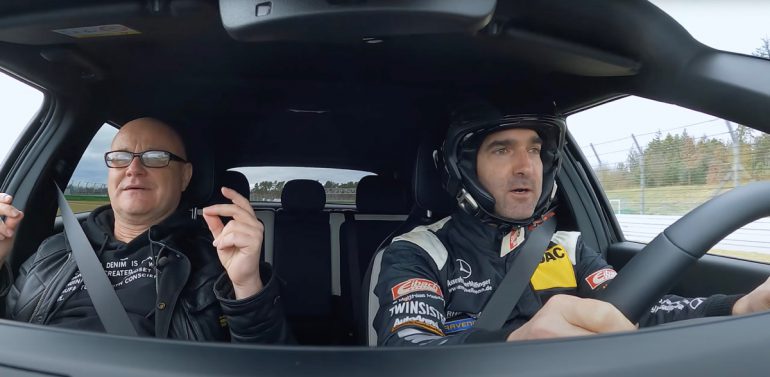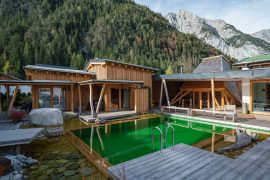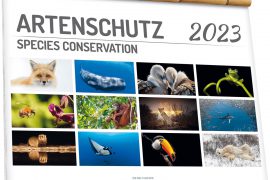Whether on this vacation or the next, when the journey is made in an e-car, long-distance insights are important. At the first ADAC 24h-e-competition on February 18 and 19 on the 4.574-kilometer Grand Prix circuit, it wasn’t just about speed. Always in focus: efficient energy management That means managing energy over the distance! The next ADAC 24h e-competition is scheduled to take place at the end of October 2022. It’s always about making kilometers. “The aim is to drive the most laps in 24 hours, and that includes charging times – with possible charging power of up to 22 kW,” Alexander Nieland from e4 Testival, organizer of the ADAC 24h e-competition, summarizes a main rule. In the ADAC 24h e-competition, 100 percent of the cars competing are production cars, and all of them are fully electric. 17 teams competed in four vehicle classes most recently in February, including the Kia e-Niro and the Kia e-Soul. Both cars have a 64-kWh battery. And: The Kia e-Soul is currently available for ADAC members in the ADAC E-Leasing program.
Some insights for everyday life and vacation travel
- E-vehicles (production cars) can withstand the 24-hour endurance stress. There were no vehicle failures in the ADAC 24h e-competition.
- Longer vacation routes are no problem for modern e-cars.
- But: It all comes down to the right energy management, which means: allocate energy over the distance! Drive evenly and plan charging stops in advance.
- The overall strategy (anticipatory driving style, energy management and charging) plays a key role. Avoiding heavy acceleration is also part of a fuel-efficient driving style for e-cars. Recuperation is of little relevance on the consumption racetrack and highway, but it is all the more important in everyday city and interurban driving to save energy.
- Always pay attention to the battery and charging capacity when driving! The charging strategy on the racetrack becomes charging planning in everyday life and on vacation: It is important to remember that a charging station may be blocked or defective. Plan B or C are then decisive.
- Only rarely drain the battery! For everyday use, it is important not to let the e-car drop below 20 percent battery capacity too often. That way, the battery lives longer. This rule is not as important in long-distance races, where time pressure and charging strategy dictate otherwise.
- E-car batteries work best at temperatures between 15 and 25 degrees Celsius. At the 24-hour consumption race, according to the organizers, the temperature during the day was 15 degrees Celsius, i.e. in the “feel-good” range. At night, it cooled down to six degrees. On day 2, the temperature was around ten degrees.
- Extreme gales prevailed during the long-distance competition, and there was also heavy rain in places. It was shown that long distances can be mastered electrically even in difficult weather conditions. The drivers of the Kia teams also reported “poor visibility conditions”. Despite extreme weather: No vehicle breakdowns at the ADAC 24h e-competition.
- For the race, an optimum speed range of 60 km/h to 90 km/h was specified by the teams driving Kia e-Niro or Kia e-Soul. Especially the range around 90 km/h seems to be the “sweet spot” in everyday life as well.
- In the 24-hour race, charging was done at about 20 kW (that’s not fast charging yet) to create equal conditions for all e-cars. Fast charging with 50 kilowatts or even more power makes sense in everyday life or on vacation. In general, however, it should be used in doses, as too frequent fast charging can hit the battery life. Nevertheless, an e-car should always have a CCS connection that enables fast charging. This significantly increases the flexibility of an electric car in everyday use. More gentle on the battery is regular charging at low charging powers via AC (alternating current). Many e-cars also have apps that can be used to program charging. The battery then gently reaches the desired state of charge.
- When charging on a vacation trip, the time can be used to visit tourist attractions or to plan another type of leisure activity. True to the motto “the journey is the destination”. However, this also requires a change in the car travel culture to some extent. What’s more, charging while traveling depends on the charging infrastructure, which should be available not only along the highways but also at tourist destinations.
- In the consumption race, a navigator is unnecessary, but for the long haul in everyday life or vacation, this tool is essential. After all, navigation with the shortest route to the destination as well as charging stations displayed is important for mastering a long distance well. According to the manufacturer, intelligent route planning is in preparation for new vehicles, such as the Kia EV 6. All Kia customers, including lessees, can plan their charging stops via the Kia Charge app.
- Fuel consumption and endurance races provide insights for motorsports and the operation of e-cars. Vehicle suppliers and manufacturers are interested not only in the performance of the battery, but also in steering, brakes and other vehicle parts. These findings from races with production cars then in turn benefit consumers in everyday life.
- Driving in the slipstream: This is sometimes practiced in consumption races. This should be avoided in road traffic, as minimum distances are quickly undercut.
Comedian Thomas M. Held and Dr. E (aka Dr. Christian Buric/ ADAC SE) took a look around the race track – not entirely without a twinkle in their eyes – and interviewed the Kia teams:
How suitable is the Kia e-Soul for vacationing?
E-cars have long since ceased to be city cars. The e-Soul is suitable for almost all everyday situations, weekend excursions and occasional vacation trips. Good to know if you are looking for an identical combustion engine: Kia is consistent with the Soul crossover vehicle and its electric strategy: In the third generation, the Soul, which now has cult status flair, will only be available as an all-electric car. The output of 204 hp provides enough power for brisk, electric overtaking. The trunk holds 315 liters. The storage space can be expanded to a total of 1339 liters. If you want to be doubly electric on the road: E-bikes can also be easily mounted on the e-car.
However, the e-Soul’s loading sill is 75 centimeters high. So luggage has to be lifted up a bit. The real range in summer is close to 400 kilometers, depending on the driving style. Charging from 20 percent to over 80 percent at a fast charger takes about an hour. Of course, there are cars with newer charging technology, such as the Kia EV6. The EV6 is significantly faster in terms of power consumption, making it even more suitable for vacations and long distances. However, fast charging did not play a role in the ADAC 24h e-Competition! To ensure fair opportunities for all participants, no fast charging was possible and it was uniformly charged via direct current with up to 22kW.





